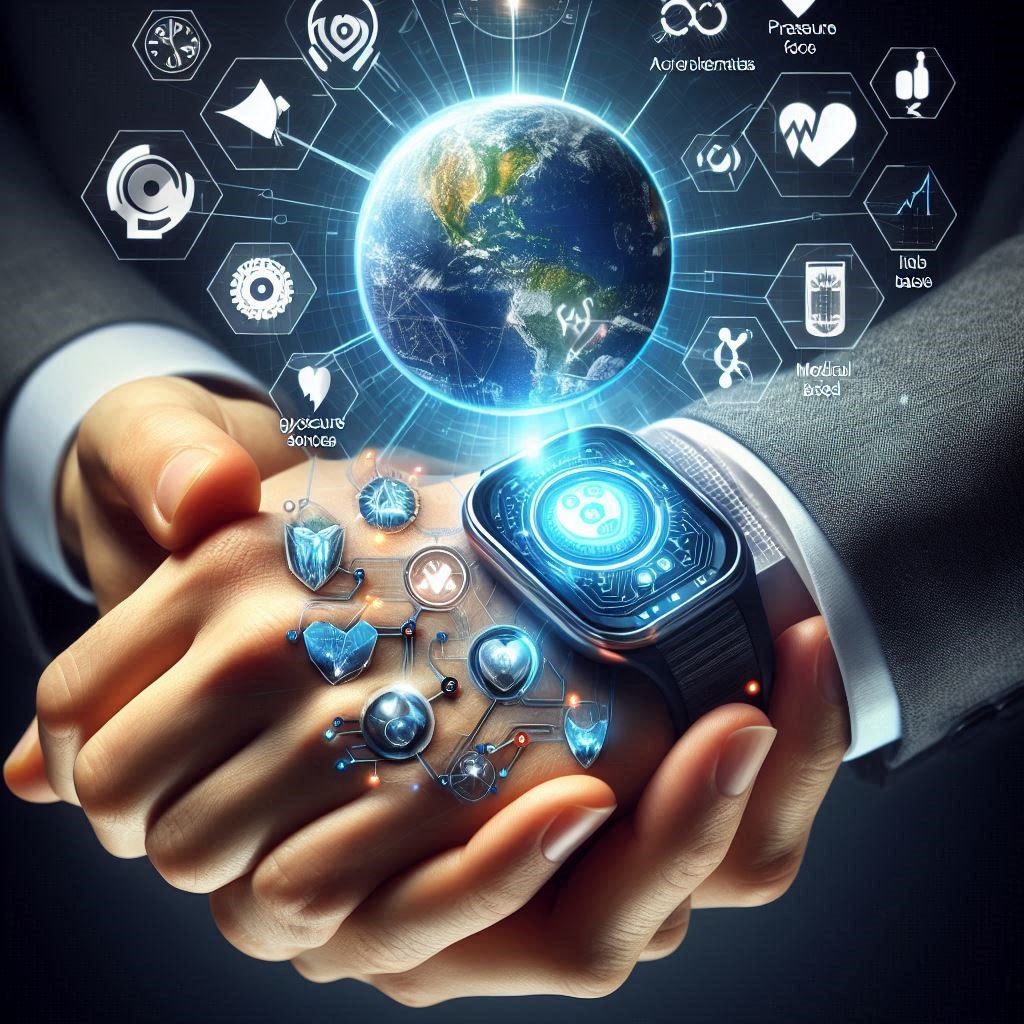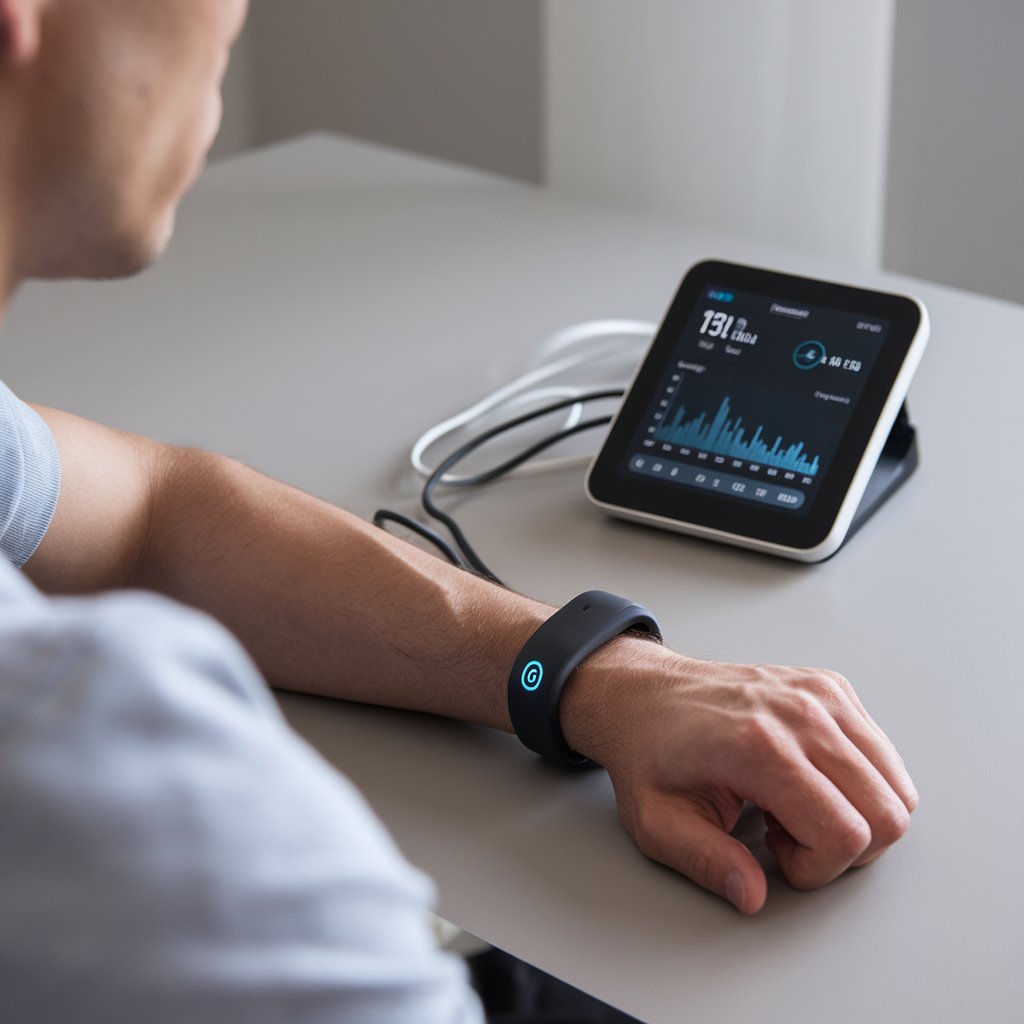The wearable sensors industry is experiencing rapid growth, driven by advancements in technology, the increasing adoption of fitness and health-monitoring devices, and the rising demand for innovative solutions across various industries. Among the regions experiencing substantial growth, North America stands out as the largest market for wearable sensors. With a highly developed healthcare sector, an expanding focus on personal fitness, and a technology-driven economy, North America is poised to maintain its leadership in the wearable sensors market for the foreseeable future.
The Role of Wearable Sensors in Today’s Market
Wearable sensors are small, lightweight devices embedded in products such as smartwatches, fitness trackers, medical devices, and clothing. These sensors are designed to collect data on various parameters such as heart rate, blood pressure, physical activity, sleep patterns, body temperature, and even glucose levels. The real-time data gathered by these sensors provides users with actionable insights into their health and well-being, enabling improved decision-making and overall lifestyle management.
As wearables become more sophisticated, they are also playing a critical role in health monitoring, personal fitness, and even healthcare interventions. From heart rate monitoring to sleep tracking and step counting, wearable sensors offer unprecedented access to information that was once only available through traditional medical testing. This transformative potential is fueling widespread interest and investment in the wearable sensors market.
Key Drivers of North America’s Dominance in the Wearable Sensors Market
Several factors contribute to North America’s dominance in the wearable sensors industry. The region’s advanced healthcare infrastructure, high disposable incomes, increasing consumer interest in health and fitness, and favorable regulatory environment have created a perfect storm for market growth.
Strong Healthcare and Medical Industry Presence North America, particularly the United States, has a robust healthcare system that supports innovations in medical technologies. Wearable sensors are increasingly used in medical-grade devices for continuous health monitoring, offering a wide range of applications in chronic disease management, rehabilitation, and elderly care. The presence of major health technology companies, such as Apple, Fitbit, Garmin, and several others, has also driven the adoption of wearable devices that incorporate sensor technology to monitor vital health metrics.
Additionally, the growing prevalence of chronic conditions such as diabetes, hypertension, and obesity in North America is driving the demand for wearable sensors to track and manage these conditions. Wearables have the potential to reduce healthcare costs by enabling early detection of health issues and improving patient outcomes, which further accelerates their adoption.
Increasing Consumer Adoption of Fitness and Wellness Devices North Americans are increasingly adopting wearable fitness trackers and smartwatches to monitor their daily activity levels, sleep patterns, and overall fitness. The growing trend of health and wellness, coupled with rising awareness of the importance of preventive healthcare, has resulted in increased demand for wearables. Products like the Apple Watch, Fitbit, and other fitness tracking devices are becoming mainstream, offering features such as heart rate monitoring, GPS tracking, and even ECG measurements, all of which require the integration of advanced wearable sensors.
As consumer interest in fitness technology continues to rise, wearable sensors are expected to become an integral part of daily life, helping users stay informed about their health status and make more educated lifestyle decisions.
Technological Advancements and Innovation North America is home to some of the world’s leading technology companies and research institutions, which are at the forefront of wearable sensor innovation. These companies are continuously improving the functionality, miniaturization, and power efficiency of wearable sensors, making them more effective and comfortable to use. Developments such as the integration of multiple sensors into a single device, enhanced battery life, and more accurate readings have fueled the popularity of wearable devices.

Furthermore, emerging technologies like artificial intelligence (AI) and machine learning (ML) are being incorporated into wearable sensors to offer more personalized and predictive insights. These advancements are expanding the possibilities of wearable devices and enhancing their value proposition to consumers and healthcare professionals alike.
Supportive Regulatory Environment North America has a well-established regulatory framework for medical devices and consumer electronics, which provides clear guidelines for the development and commercialization of wearable sensors. In the United States, regulatory bodies such as the Food and Drug Administration (FDA) ensure that wearable medical devices meet safety and efficacy standards before reaching the market. These regulations help build consumer trust and encourage the development of new and innovative wearable sensor solutions.
Download PDF Brochure @ https://www.marketsandmarkets.com/pdfdownloadNew.asp?id=158101489
Additionally, governments in the region are increasingly recognizing the value of wearable devices for healthcare monitoring. This recognition has led to various health initiatives, partnerships, and investments that support the adoption and development of wearable technologies. The FDA’s approval of wearable health-monitoring devices like continuous glucose monitors (CGMs) and ECG devices has further accelerated the market’s growth.
Strong Investment in Research and Development North American companies and research institutions are heavily investing in the development of next-generation wearable sensors. These investments are fueling innovation in areas such as biometric sensors, sweat analysis, and real-time health monitoring. Major corporations in North America, including tech giants like Apple and Google, as well as healthcare-focused companies like Medtronic, are pouring significant resources into wearable sensor technology to improve the accuracy, reliability, and usability of wearable devices.
As a result, consumers are seeing rapid advancements in the wearable sensor market, from sensors that can track blood oxygen levels to those capable of detecting irregular heart rhythms. These innovations not only enhance the user experience but also open up new markets for wearable sensors in healthcare, fitness, and wellness.
Market Outlook and Future Growth
North America’s dominance in the wearable sensors industry is expected to continue in the coming years. With an expanding consumer base and increasing applications in healthcare, fitness, and lifestyle, wearable sensors will become more integrated into daily life. The region’s strong infrastructure for research and development, as well as its regulatory framework, will continue to foster innovation and drive the growth of the market.

The Wearable Sensors Industry Size is projected to grow from USD 1.6 billion in 2023 and is projected to reach USD 4.2 billion by 2028; it is expected to grow at a CAGR of 21.1% from 2023 to 2028. The increasing demand shift towards smaller, smarter, and cheaper sensors is an essential driver for the wearable sensors Industry.
Moreover, as the wearable sensors industry matures, new opportunities will emerge. Wearable devices are expected to become even more sophisticated, incorporating advanced sensors and AI capabilities to deliver increasingly personalized and accurate health data. The integration of wearables into telemedicine and remote patient monitoring services will further drive the demand for wearable sensors, especially in the wake of the COVID-19 pandemic, which has highlighted the need for continuous, remote healthcare solutions.
North America is set to retain the largest share of the wearable sensors market, thanks to its robust healthcare infrastructure, growing consumer interest in fitness and wellness, technological innovations, and supportive regulatory environment. The region’s dominance is driven by advancements in wearable sensor technology, making it a critical hub for growth in the global wearable sensors industry. As the market continues to expand, North America will remain at the forefront of wearable sensor adoption, offering new opportunities for both consumers and businesses to benefit from the transformative power of wearable technologies.
Frequently Asked Questions (FAQ) About the Wearable Sensors Industry
What are wearable sensors?
Wearable sensors are small, integrated devices embedded in wearables such as smartwatches, fitness trackers, medical devices, and clothing. They collect various types of data such as heart rate, physical activity, sleep patterns, temperature, and more, providing real-time insights to users for health and wellness monitoring.
How do wearable sensors work?
Wearable sensors use a combination of advanced technologies like accelerometers, gyroscopes, and photoplethysmographic sensors to measure physical activity, body movements, heart rate, and other vital metrics. These sensors transmit data wirelessly to smartphones, smartwatches, or other connected devices for analysis and display.
Why is North America the largest market for wearable sensors?
North America leads the wearable sensors market due to its highly developed healthcare infrastructure, strong consumer adoption of fitness devices, continuous technological innovation, and a favorable regulatory environment. Major tech companies in the region also drive growth through constant advancements in wearable sensor technologies.
What industries use wearable sensors?
Wearable sensors are used across a variety of industries, including:
Healthcare: For continuous health monitoring and disease management.
Fitness and Wellness: To track physical activity, sleep, and overall fitness.
Sports: For performance tracking and injury prevention.
Consumer Electronics: In smartwatches and health-tracking devices.
Military and Defense: For biometric monitoring of personnel.
How are wearable sensors benefiting the healthcare industry?
Wearable sensors provide real-time monitoring of vital signs, helping doctors and patients manage chronic conditions like diabetes, heart disease, and hypertension. They also offer benefits in preventive healthcare by enabling early detection of potential health issues and improving patient outcomes through continuous monitoring.
What are the key factors driving the growth of the wearable sensors market?
Key drivers include:
Increasing health awareness and demand for fitness-tracking devices.
Advancements in sensor technology, offering more accurate and diverse data.
The growing trend of remote health monitoring and telemedicine.
Rising adoption of wearable devices by consumers for health and convenience.
